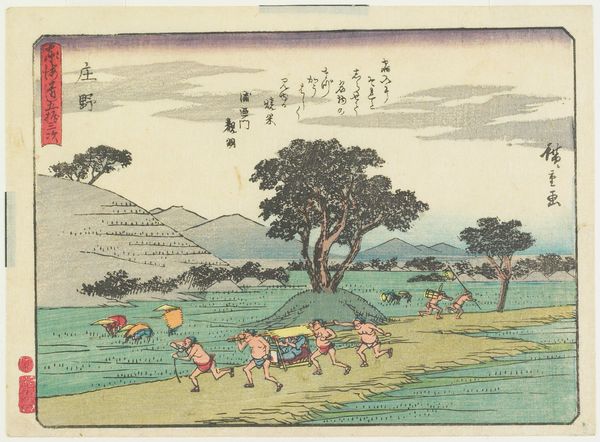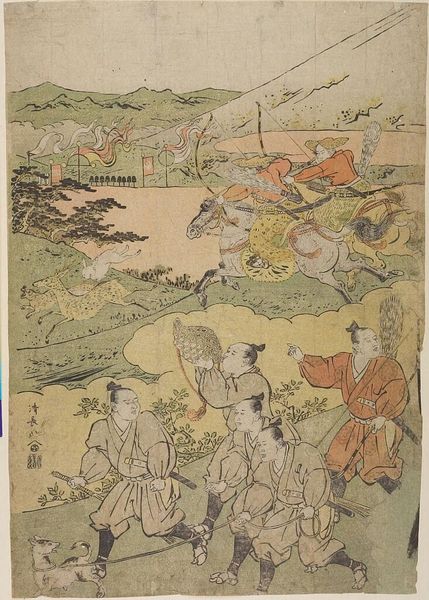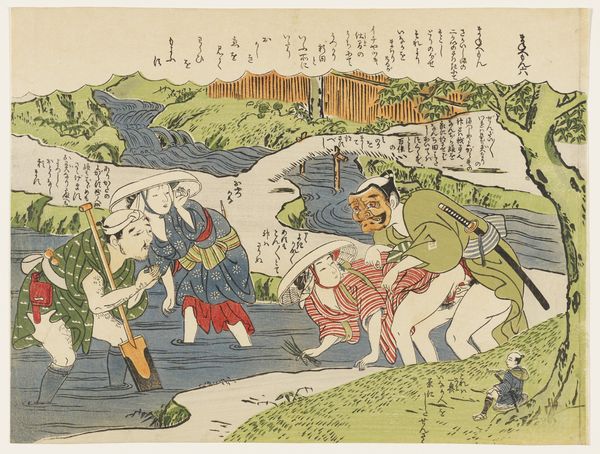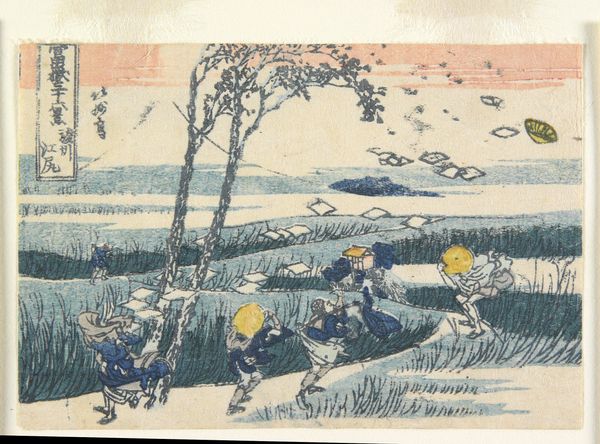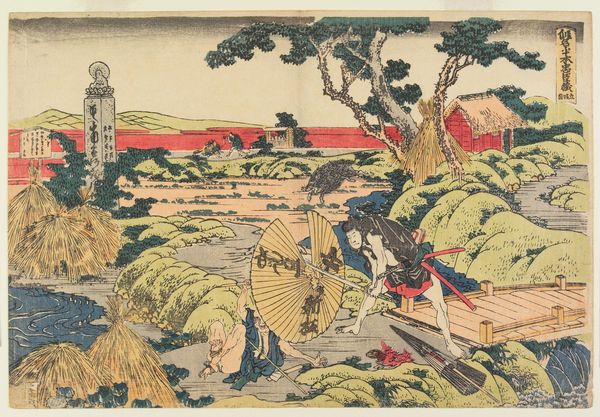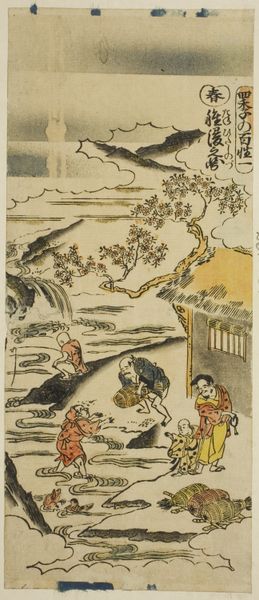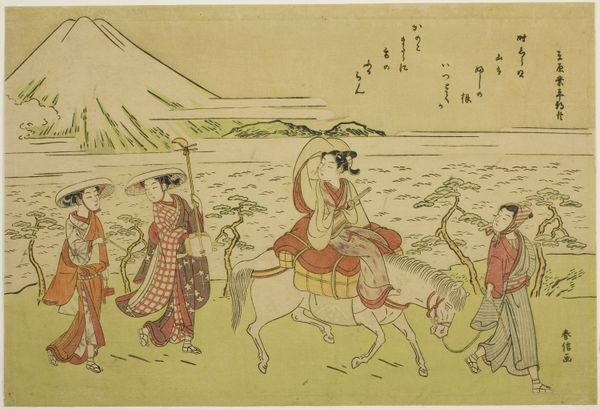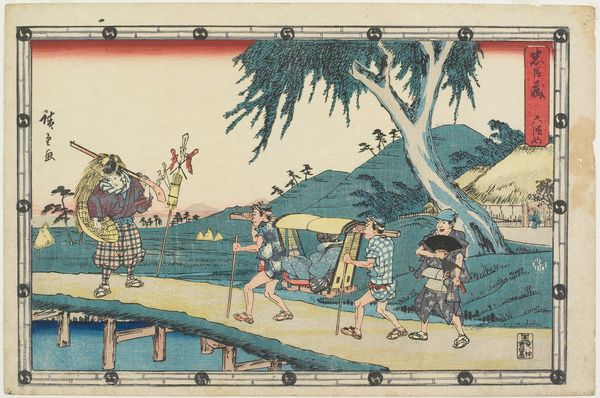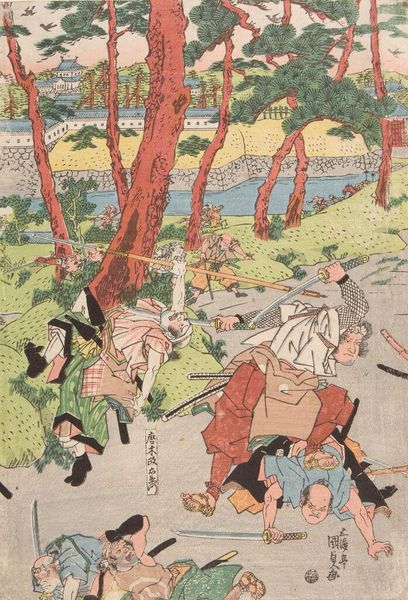
print, ink, woodblock-print, woodcut
# print
#
asian-art
#
landscape
#
ukiyo-e
#
japan
#
ink
#
woodblock-print
#
woodcut
Dimensions: 3 1/8 × 4 5/8 in. (7.9 × 11.8 cm) (image, sheet, yatsugiriban)
Copyright: Public Domain
Editor: Here we have "Sekiya Village on the Sumida River," a woodblock print made around 1834 to 1837 by Hokumyō, currently housed at the Minneapolis Institute of Art. I am struck by the delicate balance of colours and how the figures almost blend into the landscape. How do you interpret this work from a formal standpoint? Curator: It is intriguing to observe how Hokumyō uses line and colour to structure this composition. Note the distinct layering – the foreground dominated by the riders, the middle ground with its meandering river and winding path, and finally, the background featuring Mount Fuji. How does the repetition of line, specifically in the rendering of the water, impact your reading of the scene? Editor: The lines create a sense of movement and flow throughout the picture plane. But it’s interesting how the riders almost seem to mimic that flow – a sense of purposeful motion. Curator: Precisely. Hokumyō establishes rhythm through both the repetition of line and the subtle variations in colour. The contrasting yellows and blues create a dynamic visual experience. Consider how the verticality of the trees counters the horizontal flow of the river and the path, and if that impacts the feeling of visual stability of the piece. Editor: It's really about how all the visual elements come together to make something greater than the sum of its parts, it seems. It provides an incredible sense of depth and draws the eye in despite the flat application of colours. I can see the relationship between line, colour, and depth you are referring to, thank you! Curator: The inherent tension and harmony found within its formal elements certainly invite deeper inspection. It highlights the power of composition to create a coherent, compelling work.
Comments
No comments
Be the first to comment and join the conversation on the ultimate creative platform.
